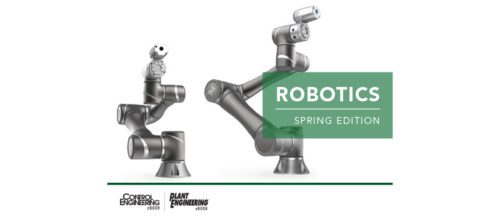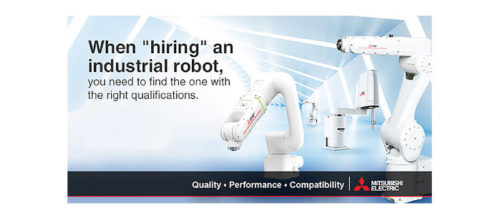Giant dragonfly, jellyfish make waves
Festo, a manufacturer of pneumatic and electromechanical systems, components and controls for automation, had an attention-grabbing giant dragonfly and jellyfish on display at the Pack Expo in Chicago. See the video to watch the dragonfly in flight!
Festo, a manufacturer of pneumatic and electromechanical systems, components and controls for automation, displayed an attention-grabbing giant dragonfly and jellyfish. The dragonfly uses the Festo BionicOpter design, an ultra-lightweight flying object that can fly in all directions and perform complex in-flight maneuvers. The BionicOpter can move each of its four wings independently, which allows it to mimic the movement and flight of a helicopter, plane, and glider. It can even fly backwards.
3D printed components
This unique way of flying is made possible by the ultra-lightweight construction (some 90% of the dragonfly is 3D printed) and the integration of components such as sensors, actuators, and mechanical components. (See photo caption for more information.) Furthermore, open- and closed-loop control systems are installed in a tiny space and adapted to one another. The flapping frequency, amplitude, and angle of incidence are controlled by software and electronics.
Mechanics of flying
The principles of ultra-lightweight construction are applied throughout the flying object. With a wingspan of just over 2 ft (63 cm) and a body length of 44 cm, the model dragonfly weighs just 6.2 oz (175 g). The wings consist of a carbon-fiber frame with a thin foil covering. Intelligent kinematics corrects any vibrations during flight and ensures flight stability. To stabilize the flying object, data on the position and the twisting of the wings is continuously recorded and evaluated in real time while in flight.
Into the sea
AquaJelly is the other mechanical creature that was demonstrated in a large water tank in the booth. Instead of flying this jellyfish swims and swarms. It has eight tentacles and housed in the center of its watertight laser-sintered body is an electric motor powered by two lithium-ion batteries.
Festo doesn’t offer the remote-controlled dragon from or autonomous robotic jellyfish for sale, but hopes to learn from the engineering used, and apply those technologies to its commercially available products. A gripper demonstrated with a robotic elephant trunk (shown previously) is available for sale, for instance.
– Edited by Eric R. Eissler, associate editor, CFE Media, Control Engineering, eeissler@cfemedia.com.
ONLINE
www.festo.com/bionic
ONLINE extra
See related Festo bionic developments including a kangaroo and bird and other product developments at Pack Expo 2014 in Chicago.
Festo is a CSIA member as of 3/5/2015
Do you have experience and expertise with the topics mentioned in this content? You should consider contributing to our CFE Media editorial team and getting the recognition you and your company deserve. Click here to start this process.



